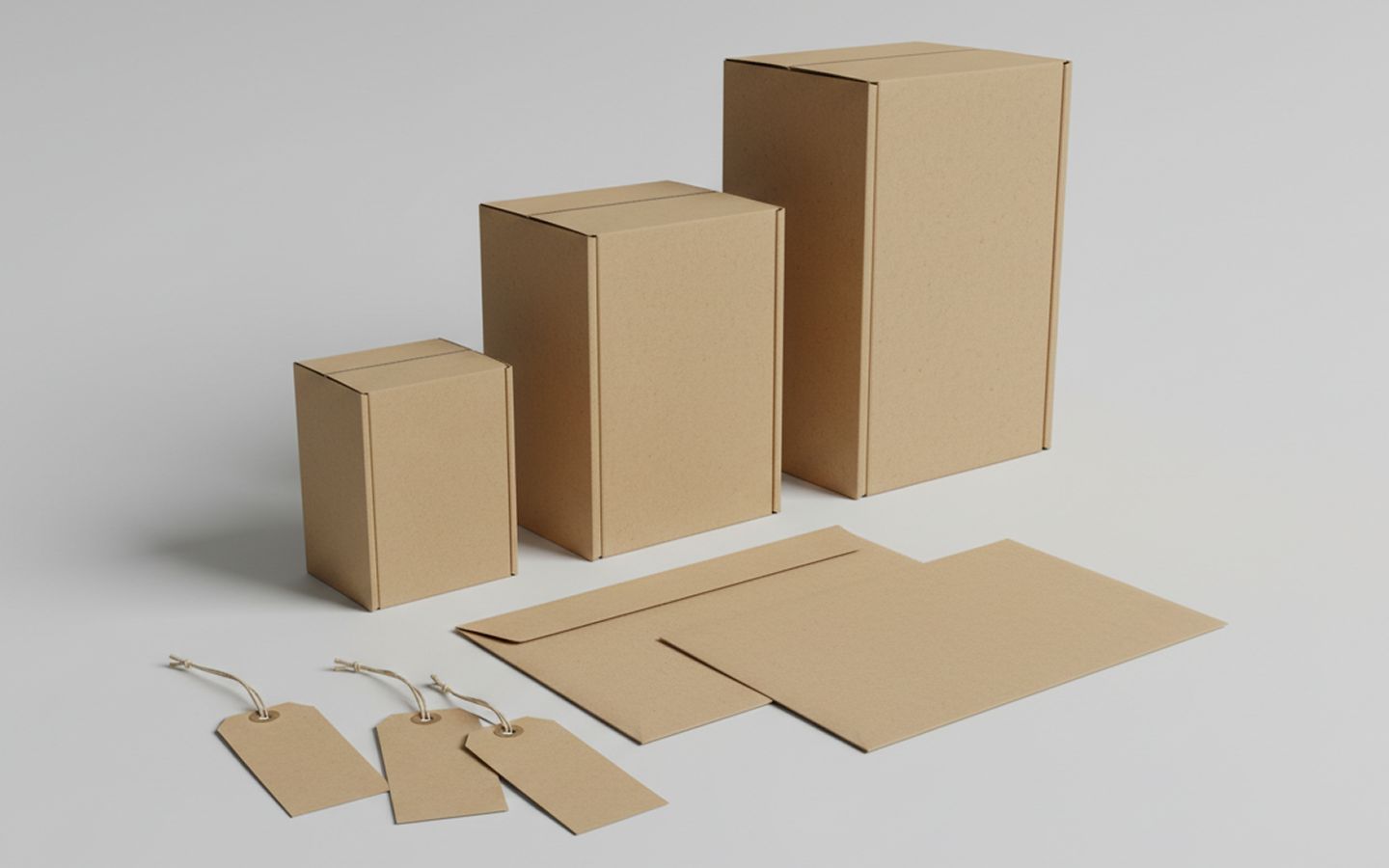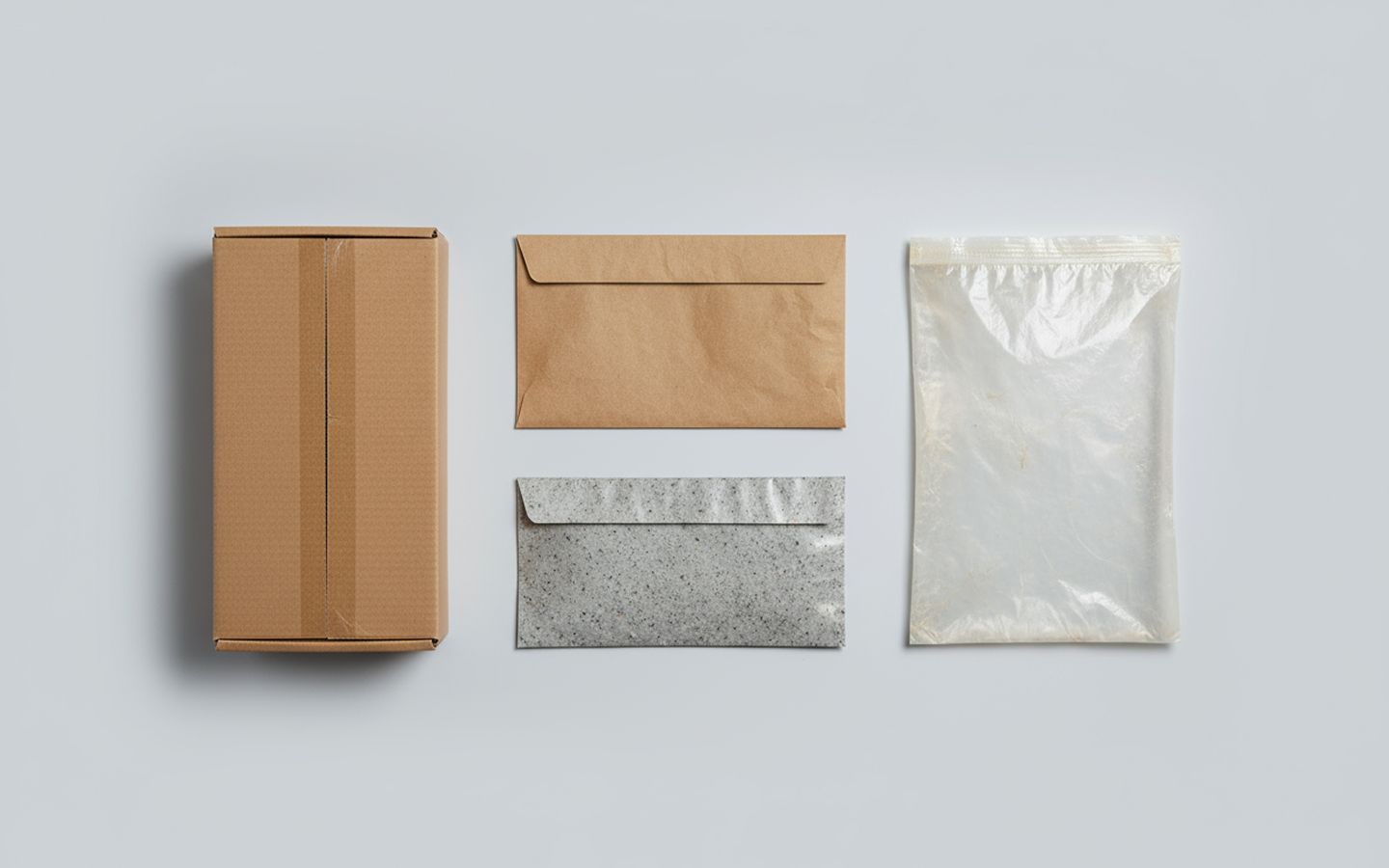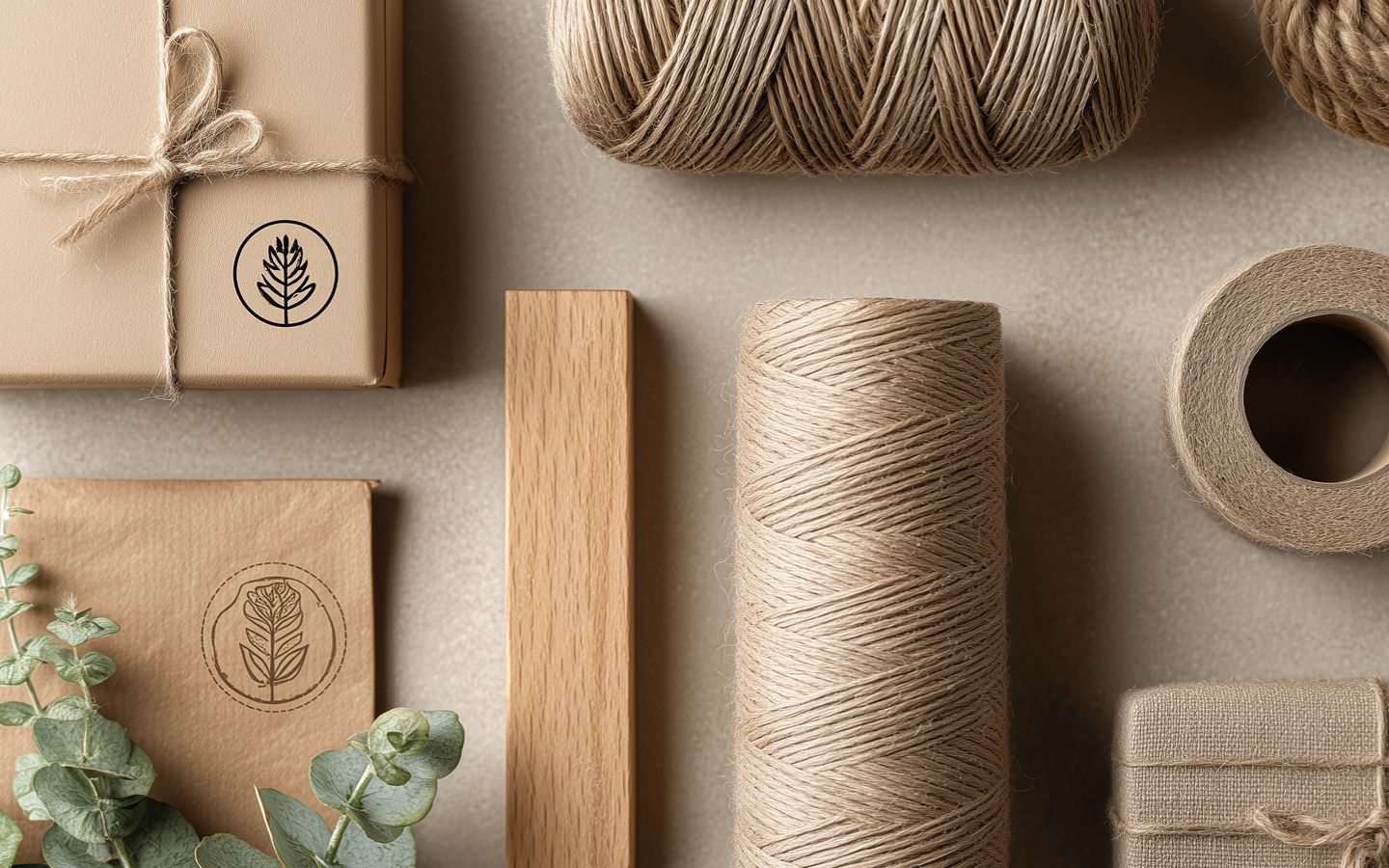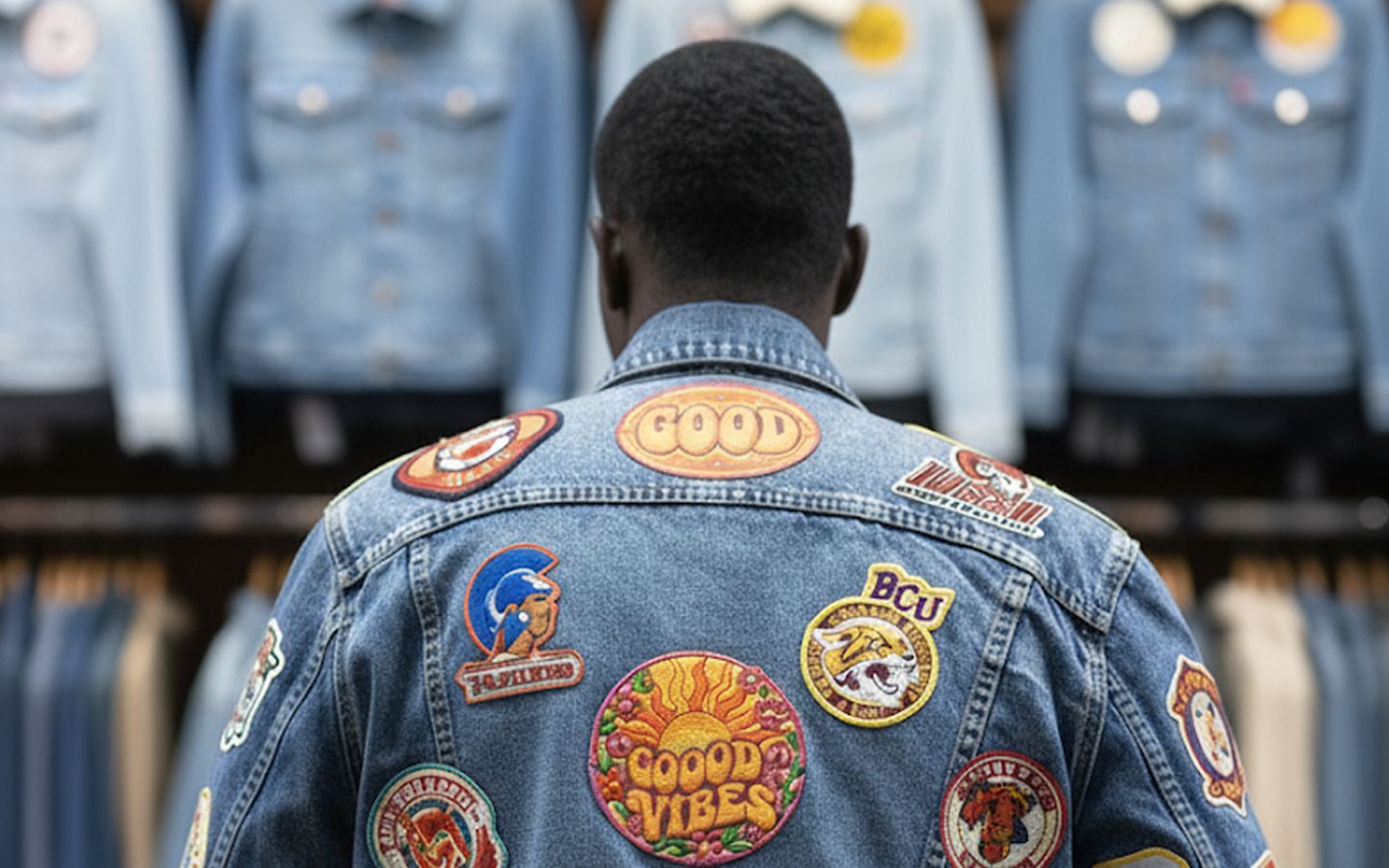Eco-friendly packaging for clothing: the complete guide
If you sell apparel, how you package and ship it matters. Eco-friendly packaging for clothing helps reduce waste, protect the planet, and build trust with customers who care about sustainability.
Let’s look at what types of packaging you can use, which materials work best, and how to make your brand’s unboxing moment stand out.

Key takeaways:
Choosing eco-friendly materials, like recycled paper, cardboard, or plant-based plastics, reduces carbon emissions and appeals to conscious consumers who value sustainability.
Use lightweight mailers made from recycled or compostable materials for soft garments, and sturdy corrugated boxes for heavier or bulk orders.
Small touches such as recycled hang tags, compostable stickers, or sustainable tissue paper create a memorable unboxing experience while keeping your packaging waste-free and on-brand.
While sustainable materials may cost slightly more upfront, they reduce shipping waste, support brand reputation, and attract eco-conscious buyers, providing business benefits over time.
What types of packaging can I use to ship apparel?
When shipping clothes, your packaging should protect items while staying eco-friendly. Choose materials that are recyclable, compostable, or made from recycled content.
The two most common types of eco-friendly packaging for apparel are:
Mailers
Mailers are lightweight, easy to store, and perfect for soft goods like shirts or leggings. Eco mailers made from recycled kraft paper or plant-based materials reduce waste and shipping costs.
Look for options that are recyclable or compostable, so your packaging doesn’t end up in landfills.
Shipping boxes
Boxes protect bulkier items such as jackets or multiple clothing pieces. Choose corrugated cardboard or kraft boxes that use post-consumer recycled paper.
They’re sturdy, customizable, and easy to recycle. You can print your logo with soy-based inks to keep the box eco-safe and on-brand.

Best eco-friendly clothing packaging for your business
Your choice of packaging depends on your style, budget, and brand values. Here are a few types of sustainable packaging that combine design and durability:
Kraft mailers
Kraft mailers are made from durable recycled paper. They’re recyclable, biodegradable, and have a natural look that fits minimal or rustic brands.
We recommend them for: smaller clothing orders or accessories.
Recycled mailers
Recycled mailers are made from post-consumer plastic waste, giving new life to materials that would otherwise end up in landfills. They’re lightweight, waterproof, and help cut down on virgin plastic use.
We recommend them for: activewear, outerwear, or any apparel that needs moisture protection.
Compostable mailing bags
Compostable mailing bags are made from cornstarch or PLA. Both plant-based materials break down in compost within months. They’re great if you want a zero-waste approach. Just make sure to include clear instructions for customers to compost them properly.
We recommend them for: eco-conscious brands that want 100% biodegradable packaging.
Cardboard mailing box
Cardboard mailing boxes are sturdy, recyclable, and perfect for branding with eco-friendly ink. They protect larger or multiple items during transit while staying sustainable.
We recommend them for: bulk orders, heavier garments, or premium unboxing experiences.
How to create a memorable unboxing experience?
Your packaging is the first thing your customers see and hold. It’s your opportunity to create a good first impression.
A memorable unboxing moment combines thoughtful design with eco-friendly packaging accessories. A careful selection of tape, tags, stickers, and tissue makes your products feel more personal without adding unnecessary waste.
Tape
Add a clean, branded touch with custom washi tape. It’s made from natural fibers and is recyclable. A far better option for the planet than plastic tape.
You can print your logo, a short message, or a pattern on it. It keeps packaging secure and adds a subtle layer of brand identity that your customers will notice.
Hang tags
Choose custom hang tags made from recycled kraft paper or eco cardstock. They allow you to share care instructions, materials, or your brand’s message.
It’s a great way to show customers that you value craftsmanship and sustainability in every little detail.
Stickers
Use custom stickers to seal wrapping paper, close mailers, or decorate boxes. Eco-friendly stickers made from recycled paper or compostable film give your packaging a fun and cohesive look.
They’re also a great way to include your logo or a thank-you note without extra printing.
Tissue paper
Sustainable tissue paper adds care and warmth to your package. It protects clothing during transit while creating a premium feel when unwrapped.
Choose recycled materials and soy-based inks to prove that elegant presentation and sustainability can go hand in hand.

Tips to make your packaging more eco-friendly
Use recyclable or compostable materials instead of plastic.
Right-size your packaging to reduce waste and shipping costs.
Print with soy-based or water-based inks.
Encourage customers to reuse or recycle your packaging.
Choose local suppliers to cut down transportation emissions.
Frequently asked questions
What packaging is best for clothes?
The best packaging depends on the type of product. According to DHL:
Lightweight apparel, such as shirts and leggings, ships well in eco mailers made from recycled paper or compostable materials.
Bulkier items, like coats or jeans, need corrugated cardboard boxes for better protection.
Choose options that are recyclable, biodegradable, or made from post-consumer waste to keep your shipping process sustainable and efficient.
Is sustainable packaging for clothing important?
Yes. Sustainable packaging plays a big role in ethical fashion, where brands consider both environmental and social responsibility. It reduces waste, limits carbon emissions, and supports a circular economy.
More customers now expect brands to use eco-friendly materials, and switching to sustainable packaging helps you build trust and show genuine care for the planet.
What are the benefits of switching to eco-friendly clothes packaging?
Eco packaging helps brands cut waste, reduce plastic use, and appeal to eco-conscious buyers. It also supports brand image and customer loyalty.
Many companies find it helps save on storage and shipping costs too. Over time, switching to eco-friendly packaging benefits both your business and the environment.
What is the difference between biodegradable, compostable, recyclable, and reusable packaging?
Biodegradable: Breaks down naturally into smaller pieces.
Compostable: Decomposes into non-toxic, nutrient-rich soil.
Recyclable: Can be processed into new products.
Reusable: Designed to be used multiple times before disposal.
Each option supports sustainability differently, but compostable and recyclable materials are generally easiest for customers to handle responsibly.
What is the most environmentally friendly packaging?
The most eco-friendly materials are kraft paper, corrugated cardboard, and plant-based bioplastics. These materials are recyclable or compostable, minimizing harm to the planet.
How does the pricing of eco-friendly packaging compare to standard packaging?
Eco-friendly packaging can cost slightly more because of sustainable materials and smaller production runs. However, as more brands adopt green practices, prices are dropping.
In the long run, businesses often save money through reduced waste, lighter materials, and improved brand reputation, making it a smart investment overall.
Final thoughts
Switching to eco-friendly packaging for clothing doesn’t need to be complicated. Start by choosing recyclable or compostable materials and adding small, thoughtful details.
Every sustainable choice, no matter how small, helps reduce waste and build a better future. Over time, these changes show customers that your brand stands for responsibility and real-world impact.
For further reading, learn more about how small brands can go green without going broke.





